Abstract
1. Anaphylactic histamine release from rat peritoneal mast cells is dependent on the presence of calcium ions. Graded increase of histamine release occurs as the calcium ion concentration is raised from 0·1 to 1·0 m-mole/l.
2. Magnesium antagonizes the effect of calcium. The dissociation constant of the Mg-receptor complex was found to be 9·4 m-mole/l.
3. Strontium will replace calcium ions in the activation of anaphylactic histamine release. Graded increase of histamine release occurs when the strontium ion concentration is raised from 1·0 to 10·0 m-mole/l.
4. Magnesium also antagonizes the effect of strontium. The dissociation constant of the magnesium-receptor complex was found to be 11·0 m-mole/l.
5. The log concentration—effect curve for strontium has a greater maximum and steeper slope than the curve for calcium.
6. Measurements of the interaction of calcium and strontium ions are in agreement with the hypothesis that strontium possesses a higher efficacy but a lower affinity than calcium, for the `calcium receptor' in mast cells.
7. Barium will replace calcium in the activation of anaphylactic histamine release.
Full text
PDF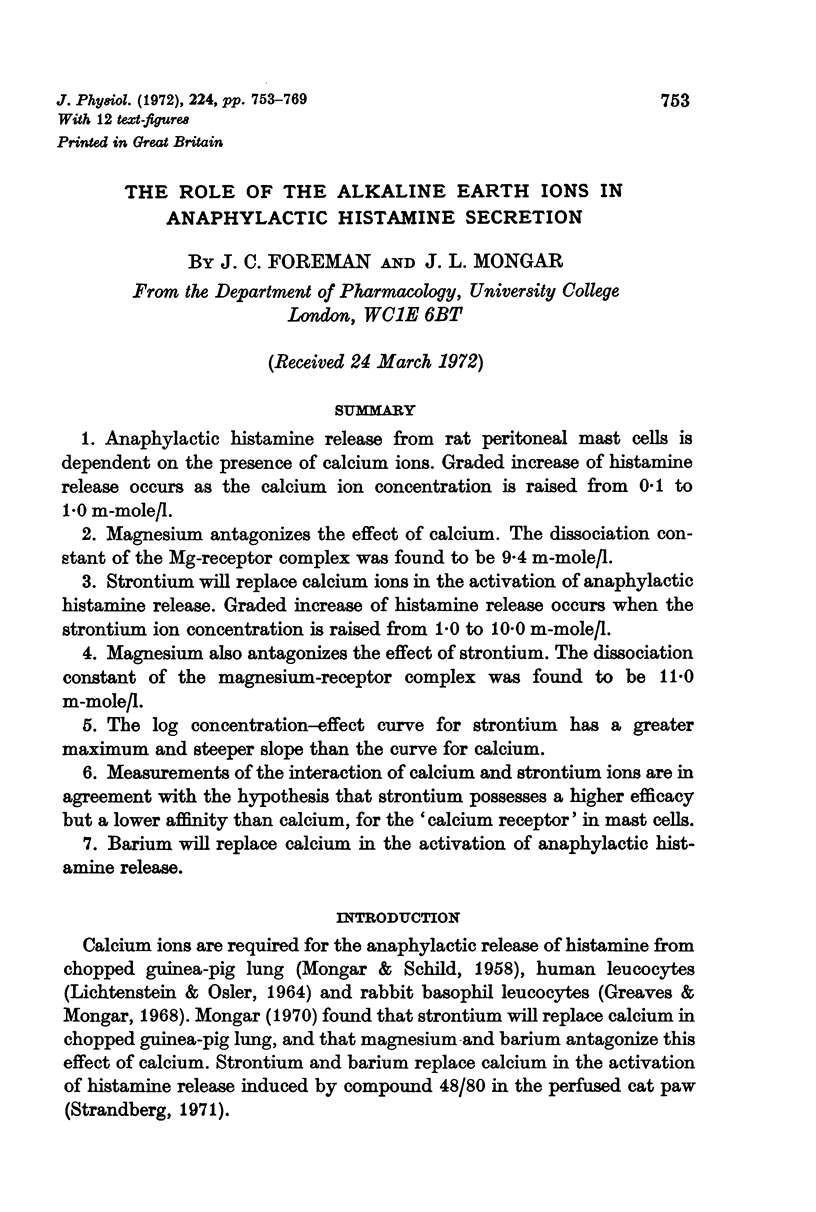
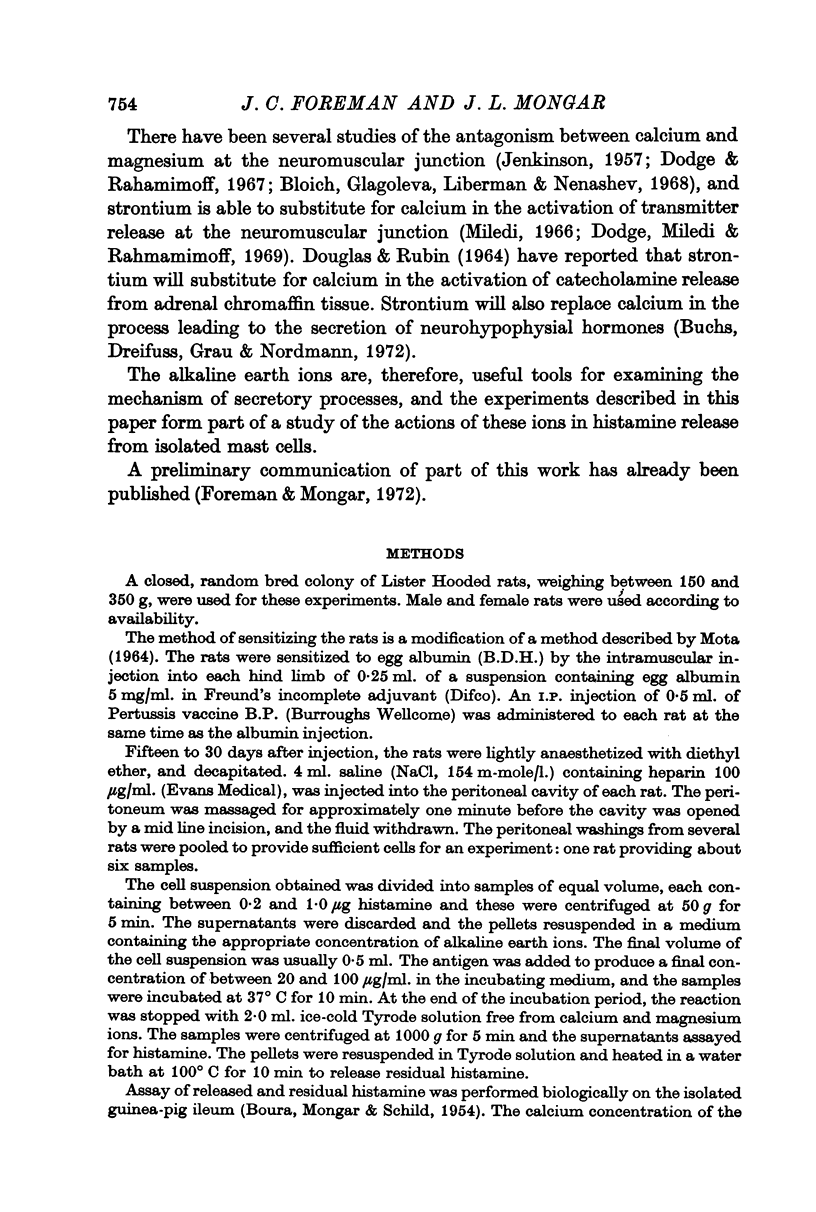
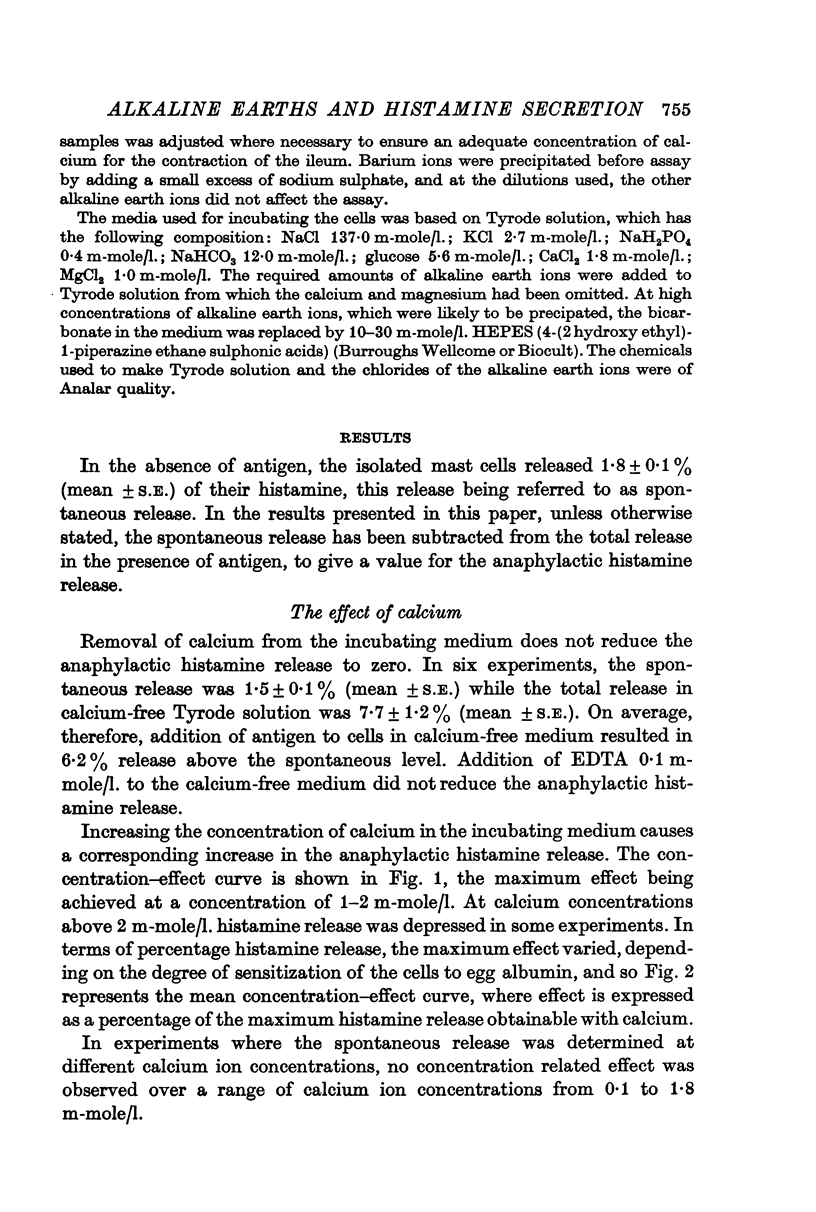
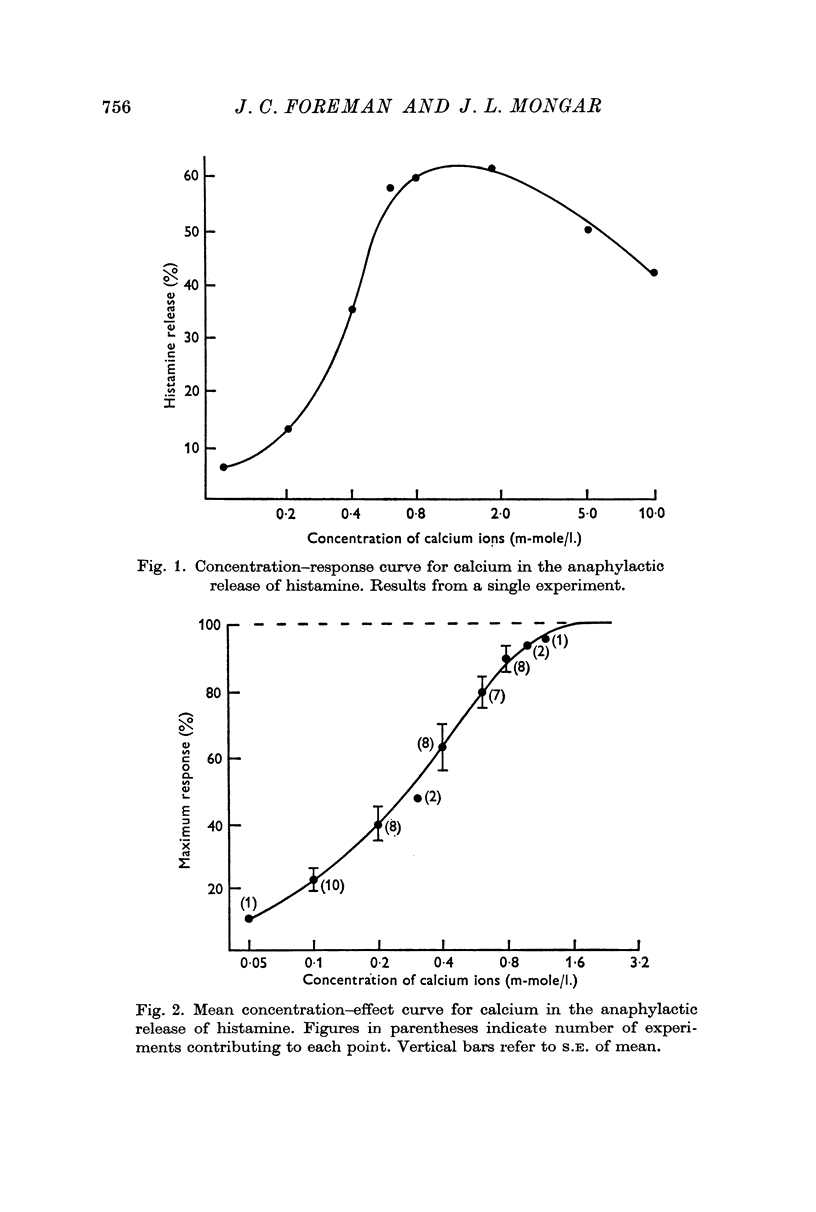
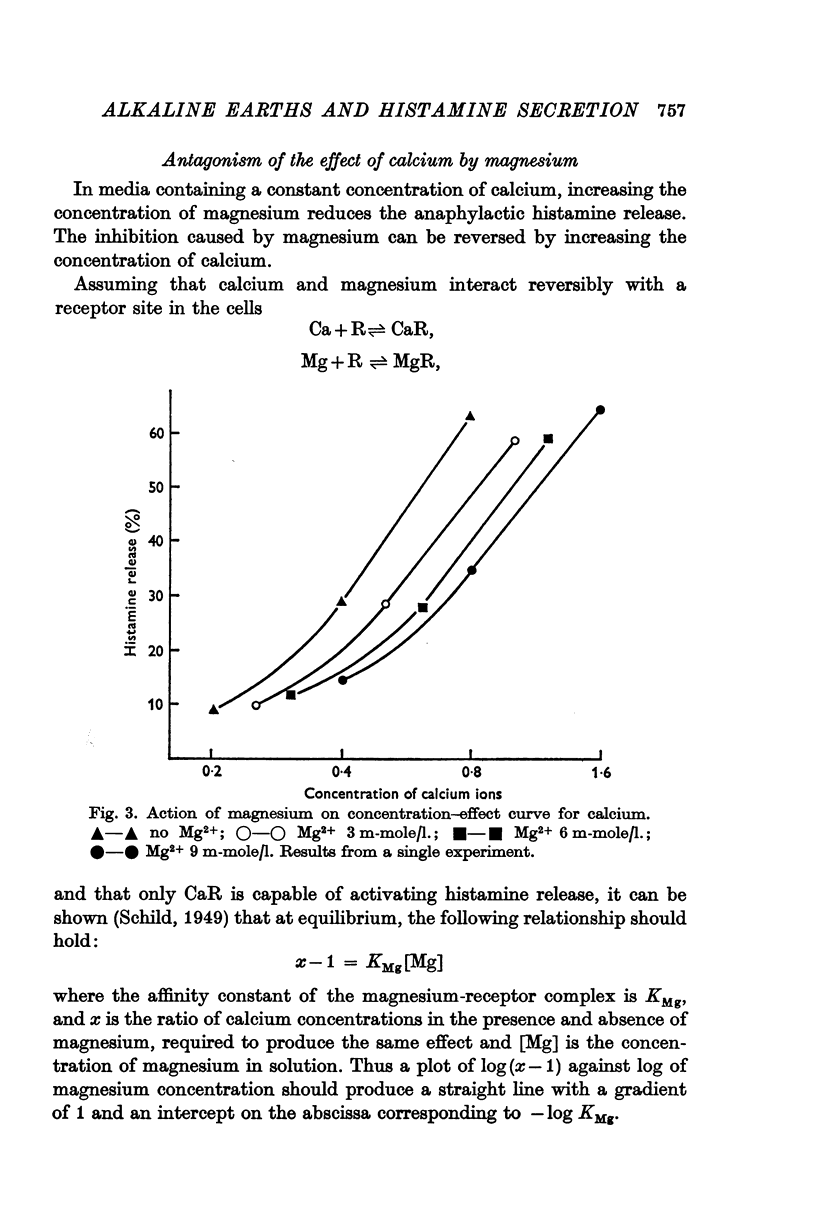
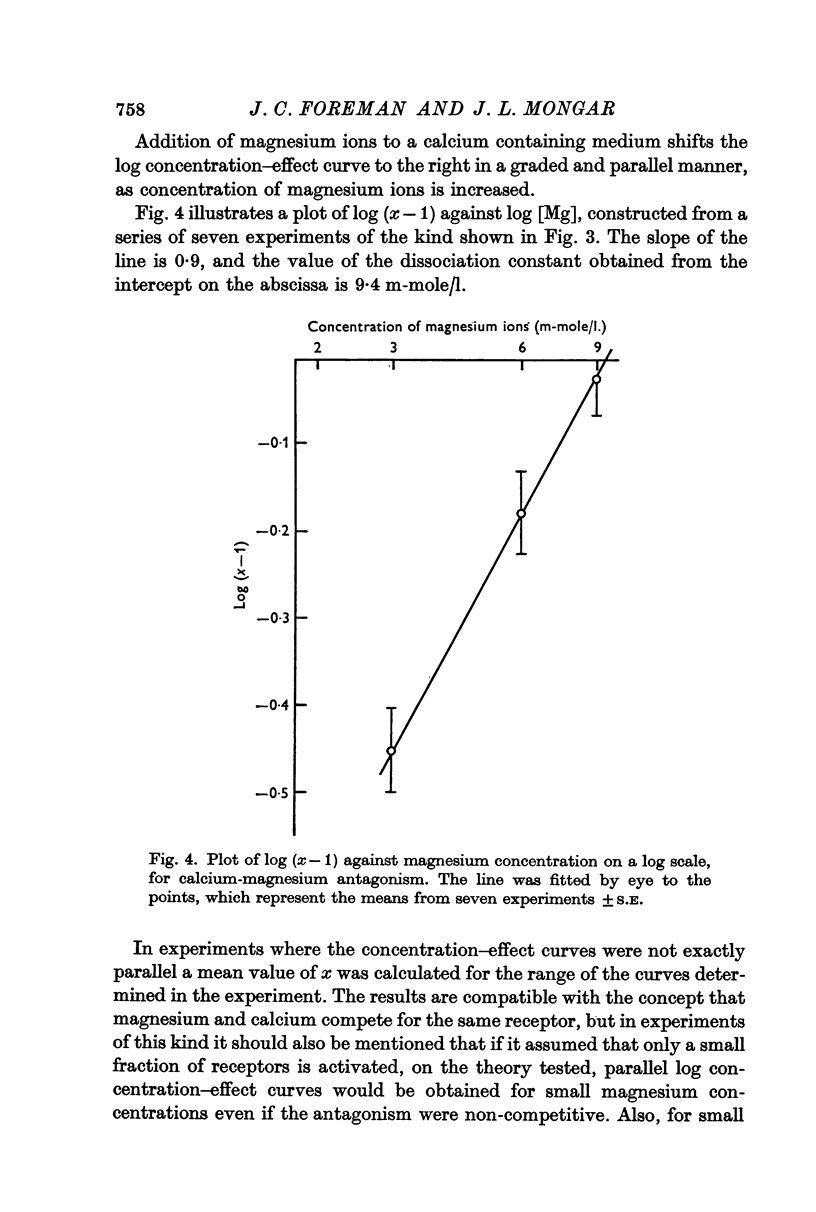
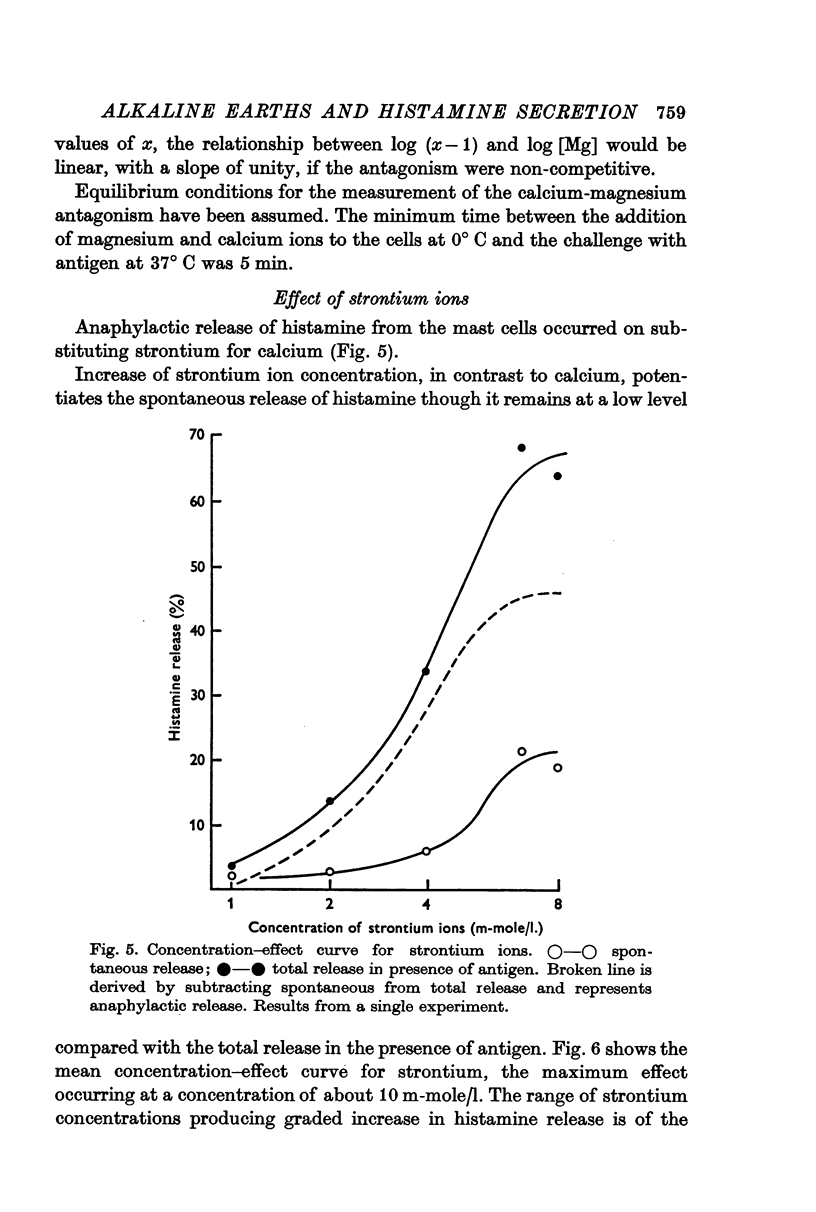
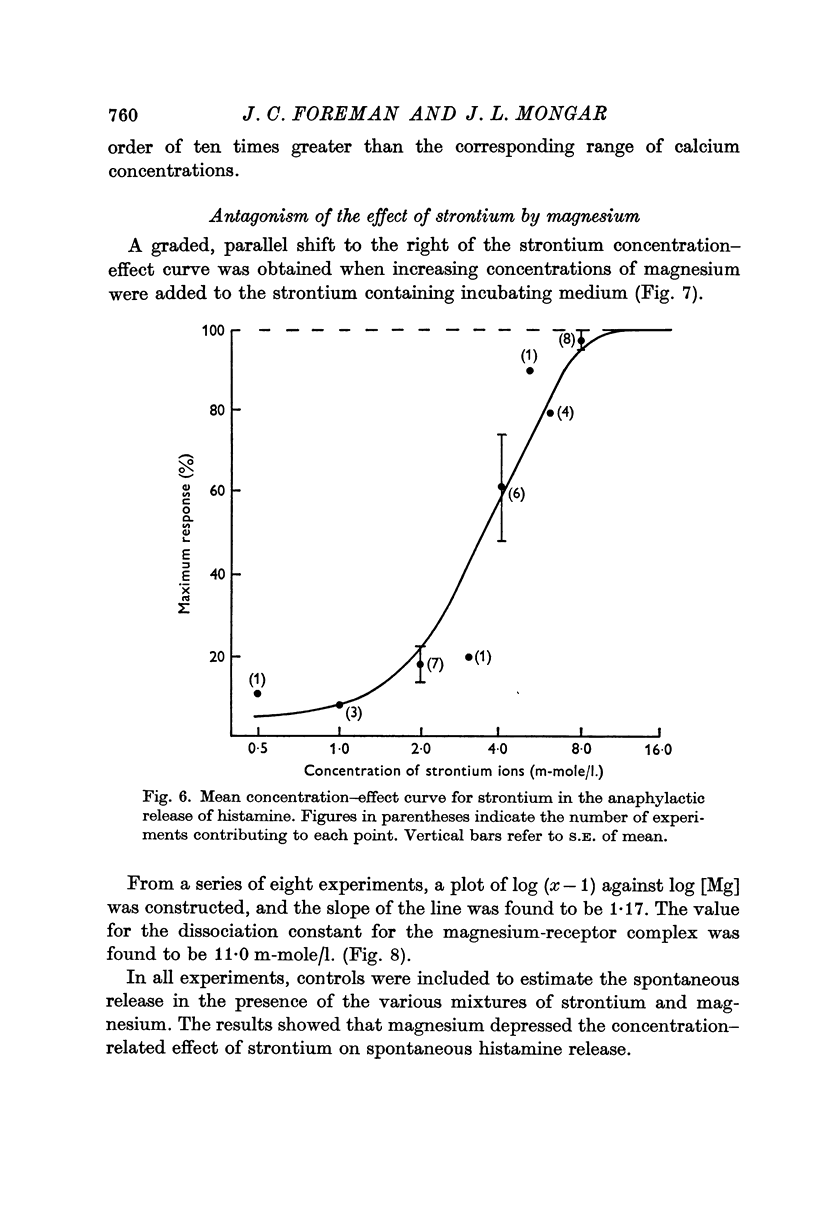
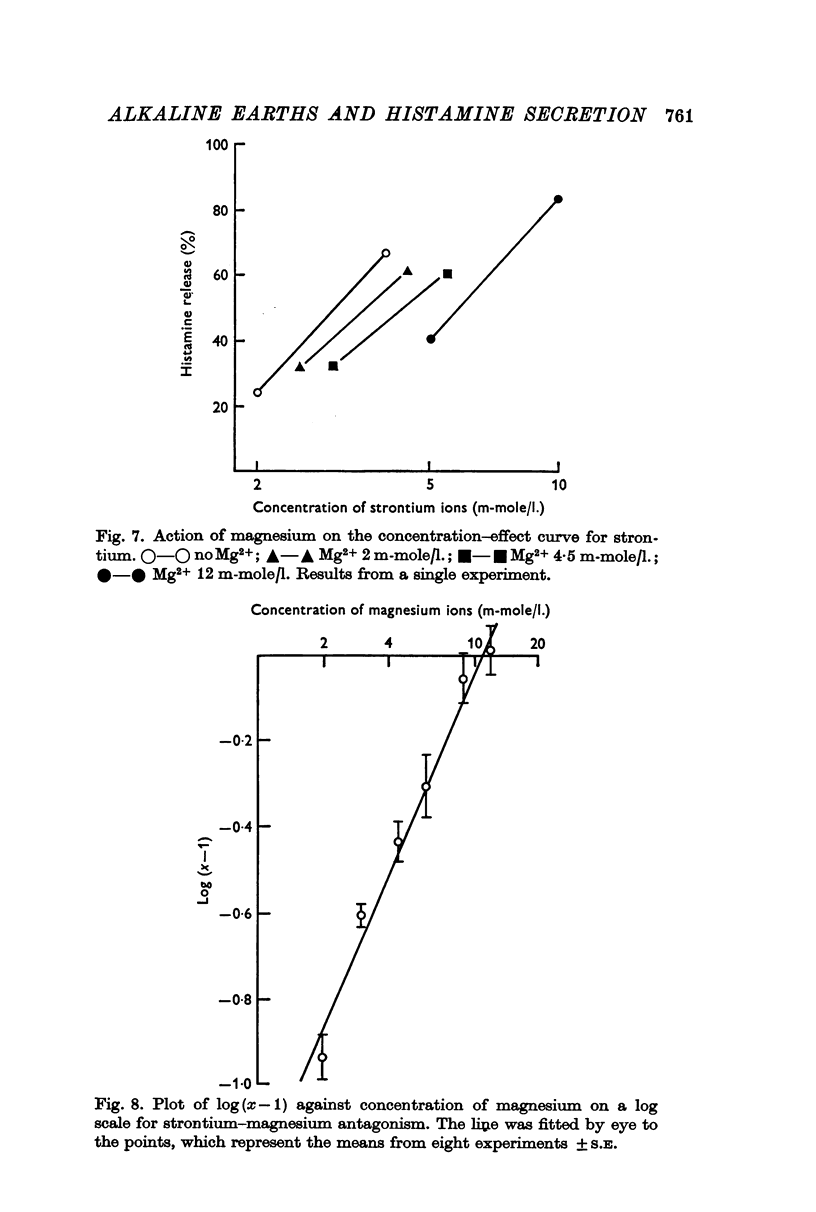
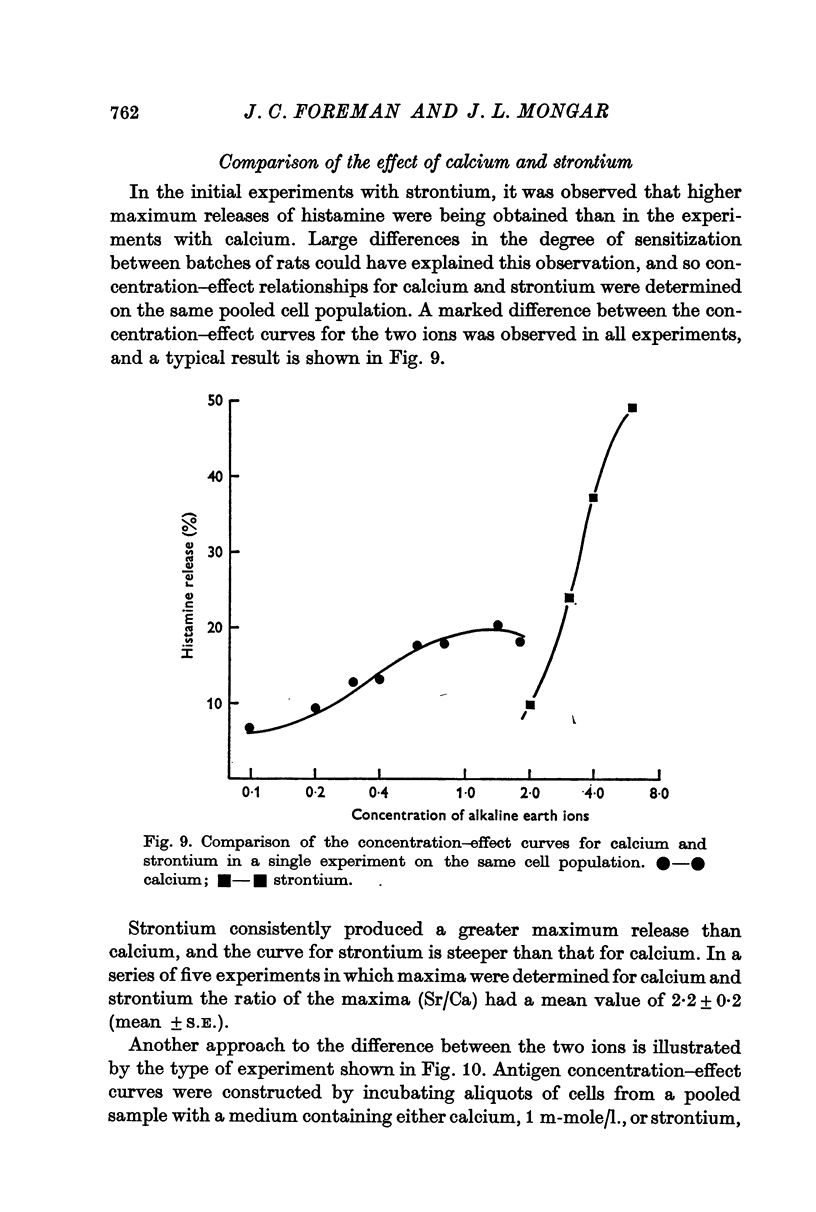
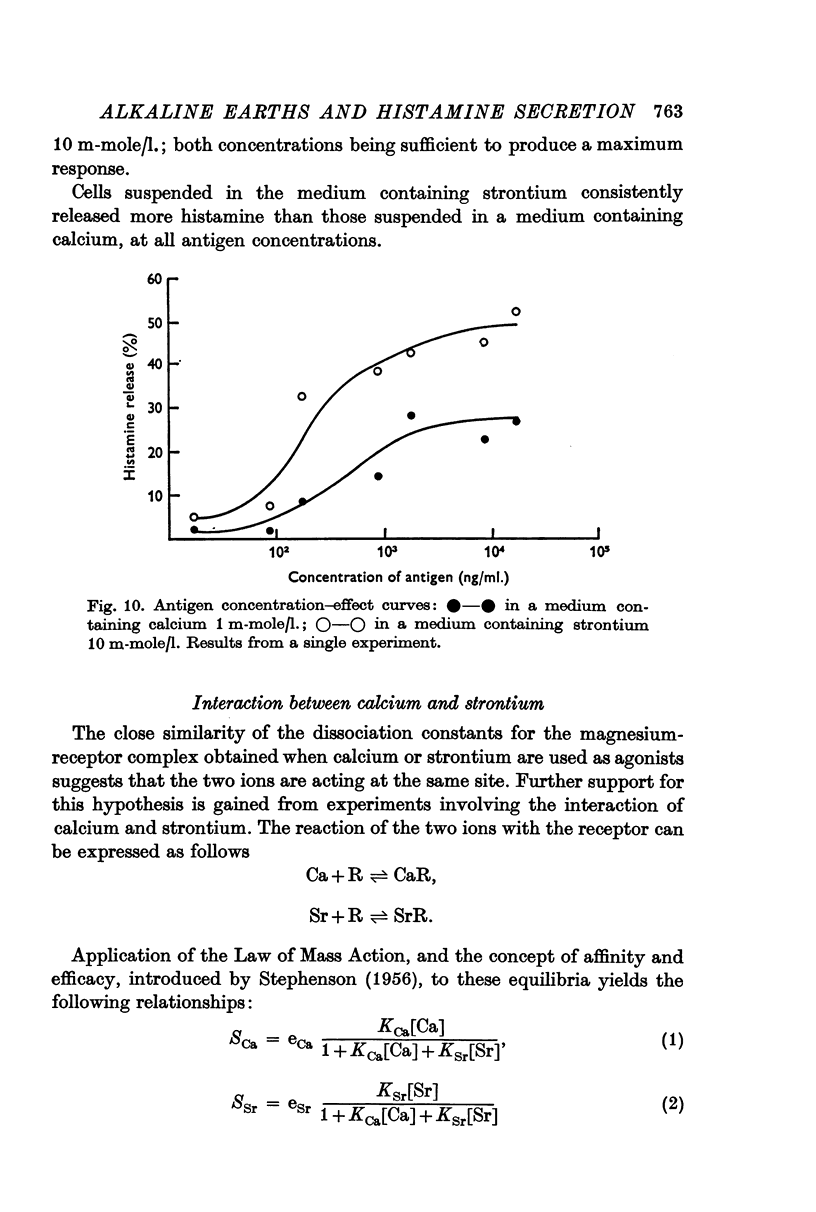
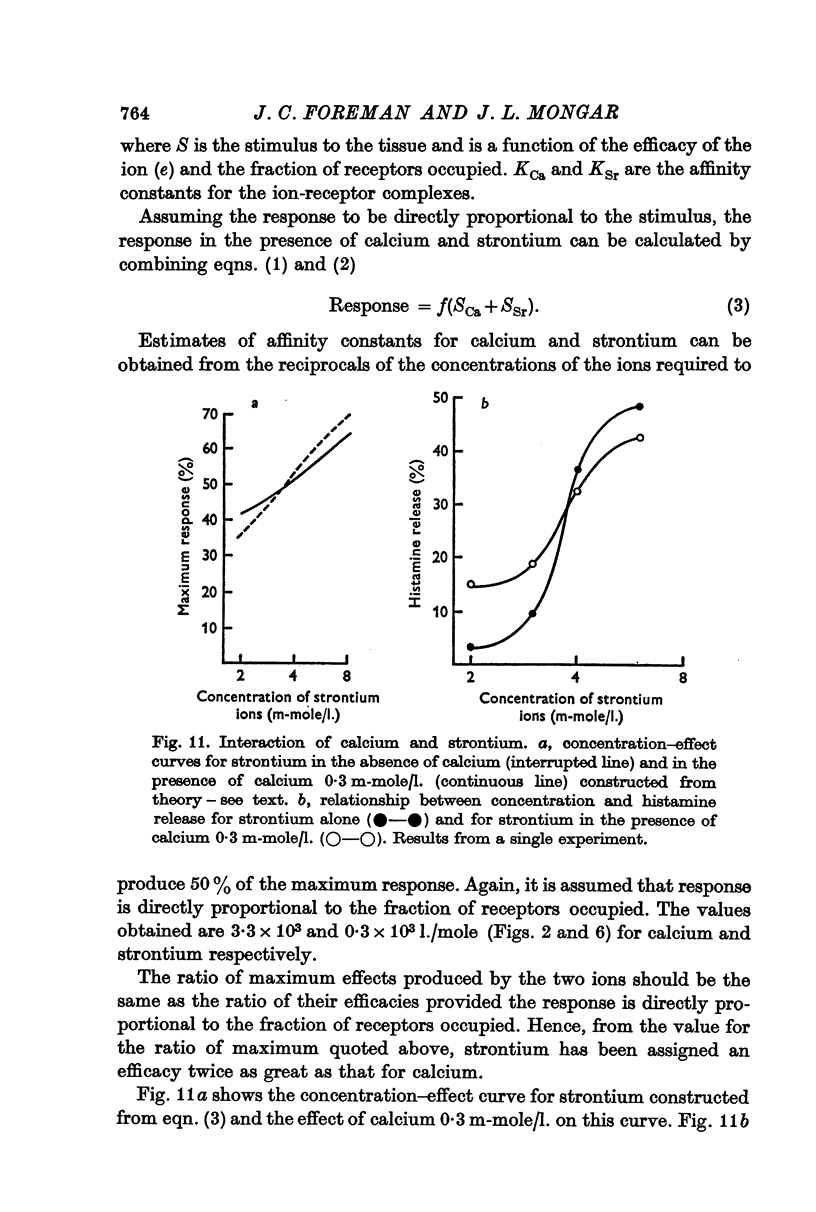
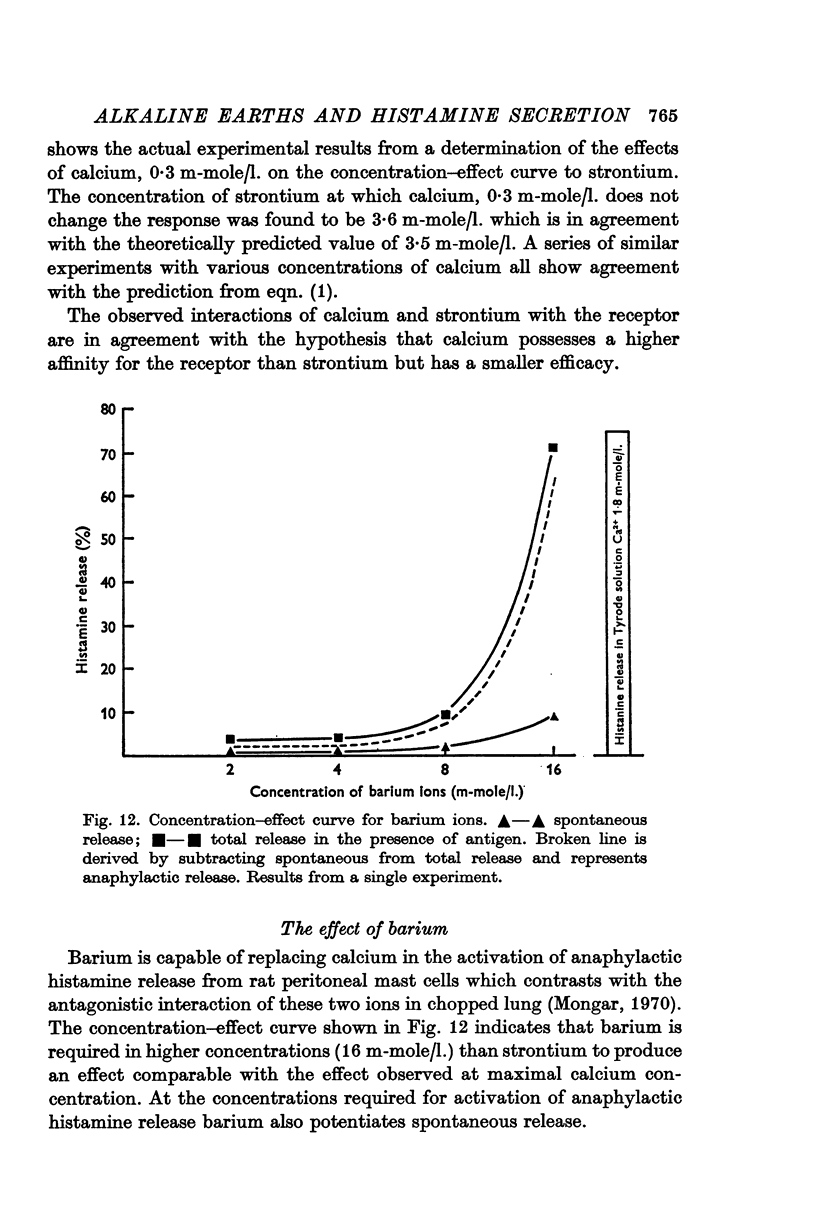
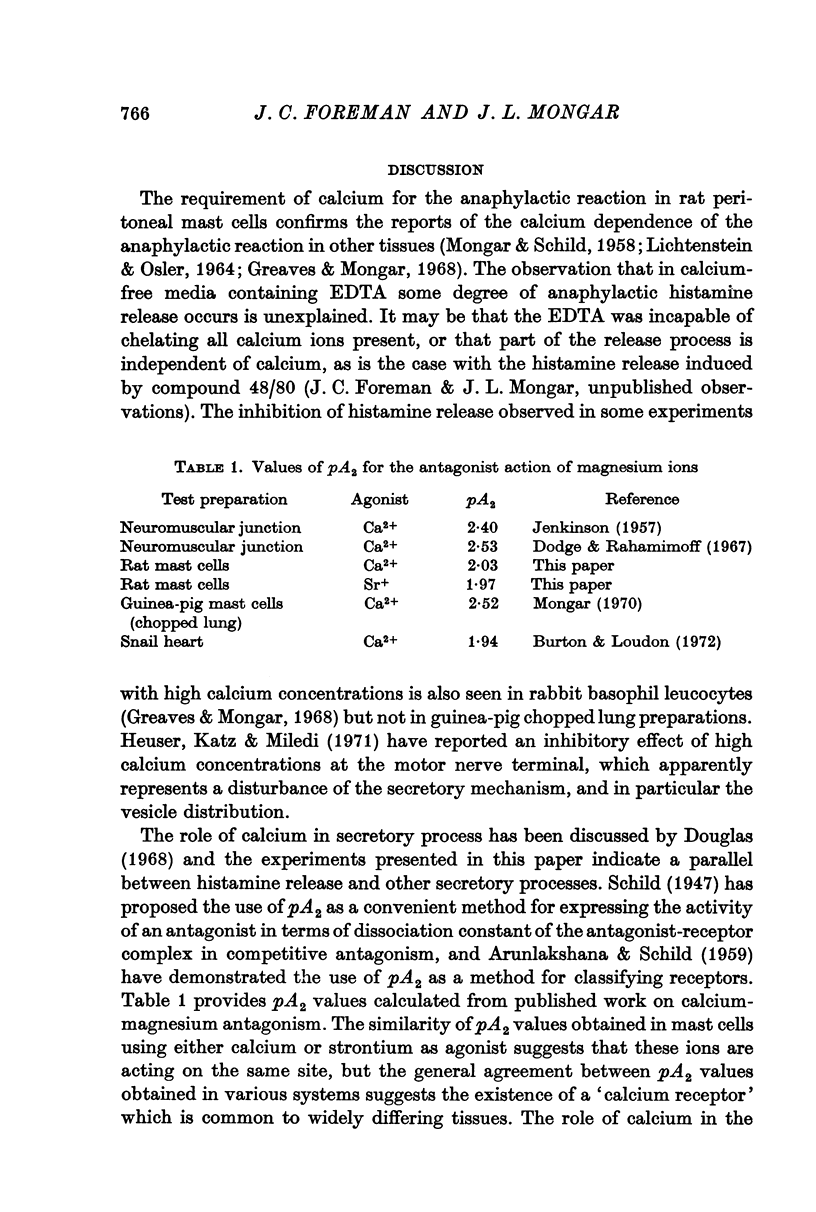
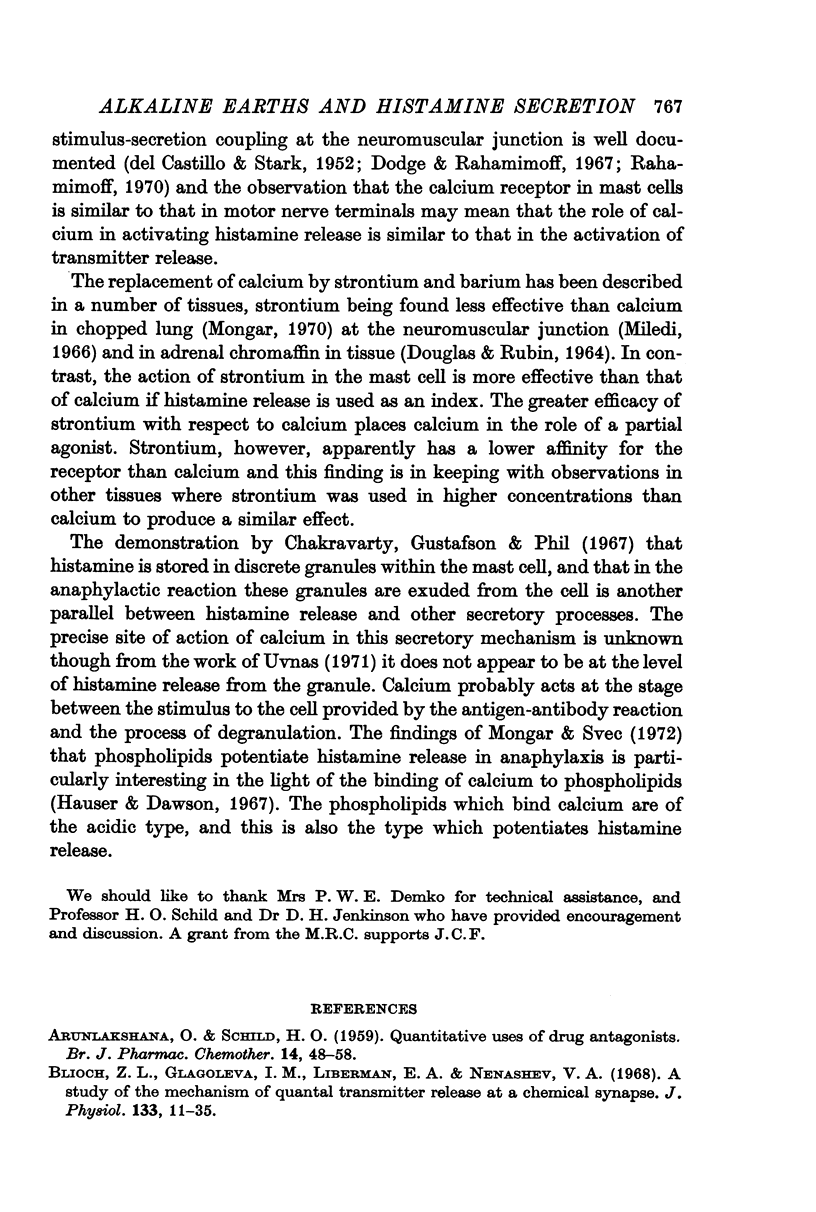
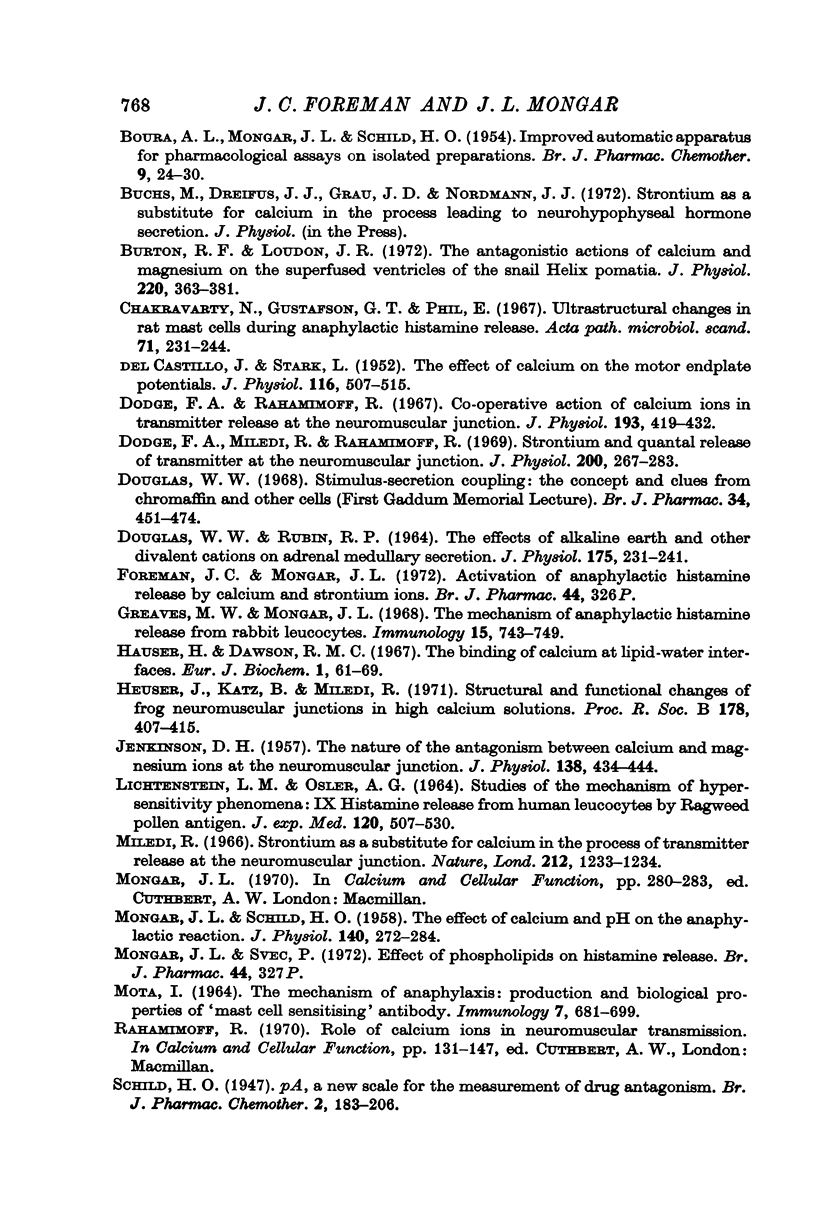
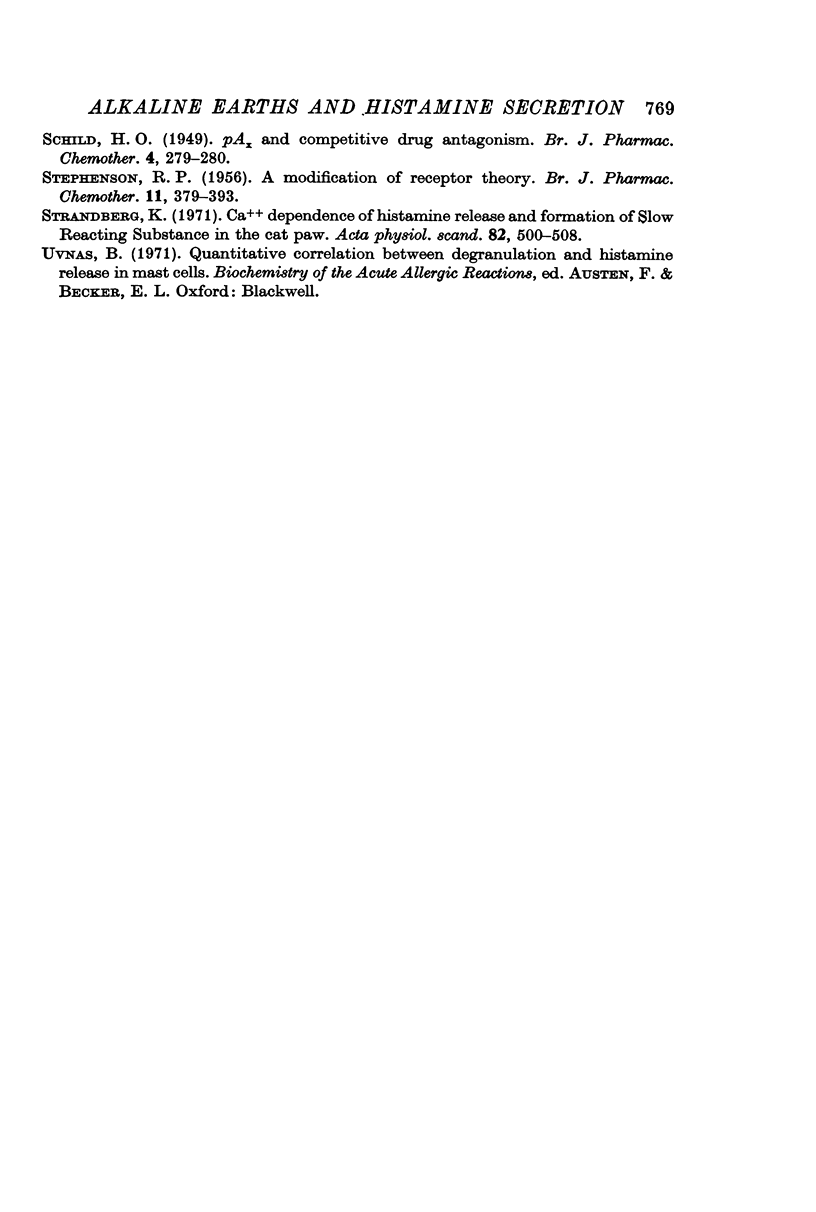
Selected References
These references are in PubMed. This may not be the complete list of references from this article.
- ARUNLAKSHANA O., SCHILD H. O. Some quantitative uses of drug antagonists. Br J Pharmacol Chemother. 1959 Mar;14(1):48–58. doi: 10.1111/j.1476-5381.1959.tb00928.x. [DOI] [PMC free article] [PubMed] [Google Scholar]
- BOURA A., MONGAR J. L., SCHILD H. O. Improved automatic apparatus for pharmacological assays on isolated preparations. Br J Pharmacol Chemother. 1954 Mar;9(1):24–30. doi: 10.1111/j.1476-5381.1954.tb00811.x. [DOI] [PMC free article] [PubMed] [Google Scholar]
- Blioch Z. L., Glagoleva I. M., Liberman E. A., Nenashev V. A. A study of the mechanism of quantal transmitter release at a chemical synapse. J Physiol. 1968 Nov;199(1):11–35. doi: 10.1113/jphysiol.1968.sp008637. [DOI] [PMC free article] [PubMed] [Google Scholar]
- Burton R. F., Loudon J. R. The antagonistic actions of calcium and magnesium on the superfused ventricle of the snail Helix pomatia. J Physiol. 1972 Jan;220(2):363–381. doi: 10.1113/jphysiol.1972.sp009712. [DOI] [PMC free article] [PubMed] [Google Scholar]
- Chakravarty N., Gustafson G. T., Pihl E. Ultrastructural changes in rat mast cells during anaphylactic histamine release. Acta Pathol Microbiol Scand. 1967;71(2):233–244. doi: 10.1111/j.1699-0463.1967.tb05161.x. [DOI] [PubMed] [Google Scholar]
- DEL CASTILLO J., STARK L. The effect of calcium ions on the motor end-plate potentials. J Physiol. 1952 Apr;116(4):507–515. doi: 10.1113/jphysiol.1952.sp004720. [DOI] [PMC free article] [PubMed] [Google Scholar]
- DOUGLAS W. W., RUBIN R. P. THE EFFECTS OF ALKALINE EARTHS AND OTHER DIVALENT CATIONS ON ADRENAL MEDULLARY SECRETION. J Physiol. 1964 Dec;175:231–241. doi: 10.1113/jphysiol.1964.sp007514. [DOI] [PMC free article] [PubMed] [Google Scholar]
- Dodge F. A., Jr, Miledi R., Rahamimoff R. Strontium and quantal release of transmitter at the neuromuscular junction. J Physiol. 1969 Jan;200(1):267–283. doi: 10.1113/jphysiol.1969.sp008692. [DOI] [PMC free article] [PubMed] [Google Scholar]
- Dodge F. A., Jr, Rahamimoff R. Co-operative action a calcium ions in transmitter release at the neuromuscular junction. J Physiol. 1967 Nov;193(2):419–432. doi: 10.1113/jphysiol.1967.sp008367. [DOI] [PMC free article] [PubMed] [Google Scholar]
- Douglas W. W. Stimulus-secretion coupling: the concept and clues from chromaffin and other cells. Br J Pharmacol. 1968 Nov;34(3):451–474. doi: 10.1111/j.1476-5381.1968.tb08474.x. [DOI] [PMC free article] [PubMed] [Google Scholar]
- Foreman J. C., Mongar J. L. Proceedings: Activation of anaphylactic histamine release by calcium and strontium ions. Br J Pharmacol. 1972 Feb;44(2):326P–326P. [PMC free article] [PubMed] [Google Scholar]
- Greaves M. W., Mongar J. L. The mechanism of anaphylactic histamine release from rabbit leucocytes. Immunology. 1968 Nov;15(5):743–749. [PMC free article] [PubMed] [Google Scholar]
- Hauser H., Dawson R. M. The binding of calcium at lipid-water interfaces. Eur J Biochem. 1967 Mar;1(1):61–69. doi: 10.1007/978-3-662-25813-2_11. [DOI] [PubMed] [Google Scholar]
- Heuser J., Katz B., Miledi R. Structural and functional changes of frog neuromuscular junctions in high calcium solutions. Proc R Soc Lond B Biol Sci. 1971 Sep 28;178(1053):407–415. doi: 10.1098/rspb.1971.0072. [DOI] [PubMed] [Google Scholar]
- LICHTENSTEIN L. M., OSLER A. G. STUDIES ON THE MECHANISMS OF HYPERSENSITIVITY PHENOMENA. IX. HISTAMINE RELEASE FROM HUMAN LEUKOCYTES BY RAGWEED POLLEN ANTIGEN. J Exp Med. 1964 Oct 1;120:507–530. doi: 10.1084/jem.120.4.507. [DOI] [PMC free article] [PubMed] [Google Scholar]
- MONGAR J. L., SCHILD H. O. The effect of calcium and pH on the anaphylactic reaction. J Physiol. 1958 Feb 17;140(2):272–284. doi: 10.1113/jphysiol.1958.sp005933. [DOI] [PMC free article] [PubMed] [Google Scholar]
- MOTA I. THE MECHANISM OF ANAPHYLAXIS. I. PRODUCTION AND BIOLOGICAL PROPERTIES OF 'MAST CELL SENSITIZING' ANTIBODY. Immunology. 1964 Nov;7:681–699. [PMC free article] [PubMed] [Google Scholar]
- Strandberg K. Ca++ dependence of histamine release and formation of slow reacting substance in the cat paw. Acta Physiol Scand. 1971 Aug;82(4):500–508. doi: 10.1111/j.1748-1716.1971.tb04995.x. [DOI] [PubMed] [Google Scholar]


